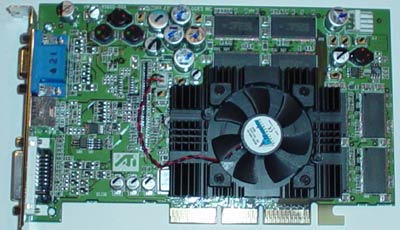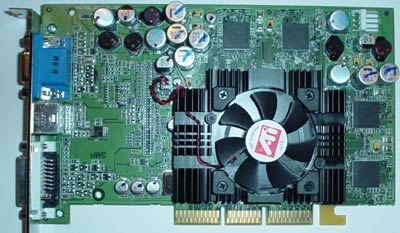What's Around the Corner? DDR-II & GDDR3?
Before diving into benchmarks we just wanted to touch on a couple of announcements that ATI has made recently. For starters, ATI has announced support for DDR-II and they even gave demonstrations of a prototype R300 based board running DDR-II SDRAM.
We were present for their demonstration and snapped a few pictures:


Both of the cards above use DDR-II and are R300 based. The upper board is using mobile optimized DDR-II while the lower board is optimized for desktop use.
Unfortunately at this point, pictures and an estimated release date are all you're going to get. You can expect DDR-II based products from ATI to begin appearing in the first half of next year.
Then there's ATI's new graphics memory standard - GDDR3. Despite the name, GDDR3 is fundamentally a DDR-II based architecture (e.g. the technology still allows for four transfers per clock). The difference is that GDDR3 implements a different clocking scheme and different I/O.
Since this article isn't focused on the technology behind GDDR3 we won't go into great details explaining the differences but GDDR3 uses unidirectional strobes and open drain 1.8V for I/O (as opposed to differential clocking and SSTL for DDR-II); to put it simply, GDDR3 changes the way data gets in and out of DDR-II devices. The benefits of these changes are mostly in simplifying graphics card design while optimizing for the high frequencies that will be needed by the end of next year.
Because of the technology's similarities to DDR-II, ATI expects that memory manufacturers will be more willing to produce it. When will we see GDDR3 on graphics cards? ATI views the first half of 2003 as the time for DDR-II while the second half of 2003 and on into the first quarter of 2004 is when GDDR3 will be made available in products. The technology is something to keep an eye on and we'll provide you with updates as we get them.










0 Comments
View All Comments